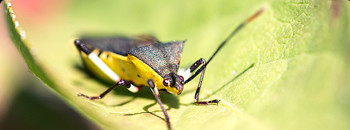Moving into that perfect new home is exciting, but looking at the list of maintenance your home requires can be a little overwhelming. In the first edition of our New Homeowner’s Guide, RISE (Responsible Industry for a Sound Environment)® is providing home and lawn maintenance tips to help tackle new-to-you tasks so you can avoid future home hassles and enjoy spring days outdoors.
1. Brush up on lawn care 101.
Taking care of your lawn is a big part of owning a home, and brushing up on your skills will help you keep your lawn as enjoyable as your neighbors’.
Mowing: When breaking out the lawnmower, make sure your blades are sharp to reduce damage to root systems and achieve a polished look. A common mistake many homeowners make is mowing too short, so set your blades for your lawn to be mowed to a height of 2.5 to 3.5 inches.
Watering: Deep water your lawn about 1 to 1.5 inches once a week to encourage growth, but be careful not to overwater.
Fertilizing: Every good lawn needs a healthy kick start. Nutrients are essential to healthy roots and barefoot-ready grass. Not sure what your lawn needs? A soil test can help determine what nutrients may be needed.
2. De-muck gutters and de-clutter storage.
Often overlooked, clogged gutters can lead to water damage and pest problems. Checking periodically and cleaning gutters at least twice a year can keep water out and prevent critters from moving in. Spring is also a good time to de-clutter piles of leaves, trash, or firewood that may have become a haven for bugs.
3. Revamp flower beds and redefine landscaping.
New home, new flower bed. Spring is the best time to clean up weeds or old leaves and pull up dead flowers and plants to promote new growth and make way for new buds. Re-edge your flower beds and redefine the borders of your lawn for a defined look. Plant your spring garden with both annuals and perennials, and make sure you are planting native, not invasive, plants and flowers. For more protection and a finished look, use mulch to retain soil moisture, suppress weeds and resist diseases.
4. Seal crawl space and perform exterior touch ups.
Weather can take its toll on exterior surfaces, causing cracks and other minor damage. Inspect outdoor spaces and areas such as your roof, porch, and fence for water damage, termites, peeling paint, and broken siding that may have been missed in the initial inspection. Pay close attention to corners, edges, and screens, as critters don’t need much room to wiggle their way into your homes. Seal any holes and caulk cracks in windows and doors and consider planting your garden away from doors and windows to help reduce the threat of pests climbing indoors. Make sure to eliminate potential breeding grounds for mosquitos by dumping all standing water and treating your lawn for mosquitoes, ticks and others harmful insects.
5. Know when to bring in the pros.
Sometimes DIY doesn’t make the cut. For tasks that are a little more challenging or require expertise, look at bringing in a professional. Make sure to do your research before hiring someone for your lawn care and pest control needs. Here are a few questions you might want to ask before hiring:
- Are you a licensed and insured applicator?
- What will the service or treatment be, and what do I need to do to prepare for it?
- How do you approach pest control? Is it an integrated solution?
- Is there a contract involved, and what does it include?
Vetting a company or professional prior to use can help you avoid problems and ensure you’re creating an outdoor space you and your family can enjoy.
Check back soon for more new homeowner tips.

